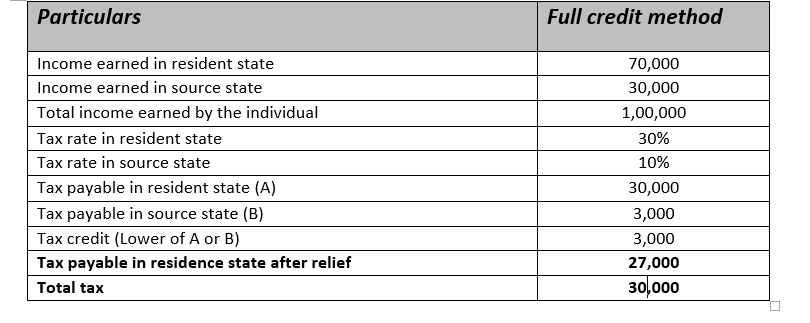Various unresolved issues –
Issues that are arising in context of Foreign tax credit (‘FTC’) are –
- In accordance with the provisions of the convention –
Country of residence shall grant credit of foreign taxes paid only if the income is taxed in the Source country ‘in accordance with the provision of the Convention’.
Madras High Court in the case of CIT v. Lakshmi
Textile Exporters Ltd. ( held
that, where profits of a PE are exempt from tax in the Country of residence the
Country of residence has to accept a finding of the source Country that a
Permanent Establishment exists in the source Country. Also, if the source
Country chooses to give exemption to such income under its laws then also such
income would be treated as “taxed in accordance with the convention” and the
Country of residence would not have the right to tax such income.
- May be taxed –
Whereever, the Model convention uses the language that gains arising may be taxed in either of the contracting state, it appears that no contracting state is given the exclusive jurisdiction to tax the gains.
CIT vs. Sr.S.R.M Firm (208 ITR 400) in Madras High Court held that the contention on behalf of the revenue that wherever the enabling words such as words ‘may be taxed’ are used there is no prohibition or embargo upon the authorities from assessing the category of income, cannot be countenanced as of substance or merit. The court held that the revenue cannot take advantage of such enabling language to claim it as a right to bring to assessment the income covered by such clauses.
It may be held that if any income or gain is taxed in one Country, the same cannot be taxed in the other Country. However, this view may be subject to review as DTAA cannot take away the right of the other Country to tax the income. The object of DTAA is not to take away the right of the other Country to assess any receipt as income and purpose of DTAA is to minimize the tax burden by allowing credit for tax paid.
- Inclusion of surcharge in computing FTC – Bangalore Tribunal in the case of Infosys Technologies Ltd. (108 TTJ 282) interpreted the terms ‘tax’ and ‘Indian tax payable’ in Article 23 of the India Canada tax treaty and held that while computing the Indian tax on doubly taxed income, ‘tax” should include surcharge and a credit in India for Canadian tax was available only after first computing the Indian tax including surcharge.
- Impact of loss in Country of residency in computing the extent of FTC If loss in the Country of residence is higher than the foreign income, then tax in India would be nil. Similarly, if loss in India is lower than foreign income then tax in India would be only available on part of foreign income. Mumbai Tribunal in the case of JCIT v. Digital Equipment India Ltd (94 ITD 340) had examined the issue with reference to Article 25 of the Indo-US DTAA. It was held that no refund shall be allowed to the tax payer since the assessee had loss after set-off of foreign income against the income in the Country of residence (India).The reason cited by the Tribunal was that tax in India was nil on the doubly taxed income.
- Timing mismatch – Various issues arises with regard to the period for which foreign tax credit should be allowed. Reference in this regard can be placed on the paragraph 32.8 of the OECD commentary on Article 23 states that since both Articles 23A and 23B require for relief to be granted where an item of income or capital may be taxed by the source Country in accordance with the provisions of the Convention, it follows that such relief must be provided regardless of when the tax is levied by the source Country. The State of residence must therefore provide relief of double taxation through the credit or exemption method with respect to such item of income or capital even though the State of source taxes it in an earlier or later year.
Also, Mumbai Tribunal in the case JCIT v. Petroleum India International , though in the context of section 91 of the Act, wherein it was held that it is not required that payment of taxes outside India shall be made during relevant previous year itself to provide relief for the same.
- Carry forward/carry back of excess FTC – Whenever taxes paid in foreign country is greater than the taxes paid in India on that foreign source income, some countries allows for carry forward/ carry back of excess FTC.
- FTC in traingular cases –
A detailed guideline is required to enable the taxpayers to claim credit for taxes paid in more than two jurisdictions. Non-discrimination article under the tax treaties needs to be analysed to determine whether the PE can avail credit of taxes paid in the third country.










